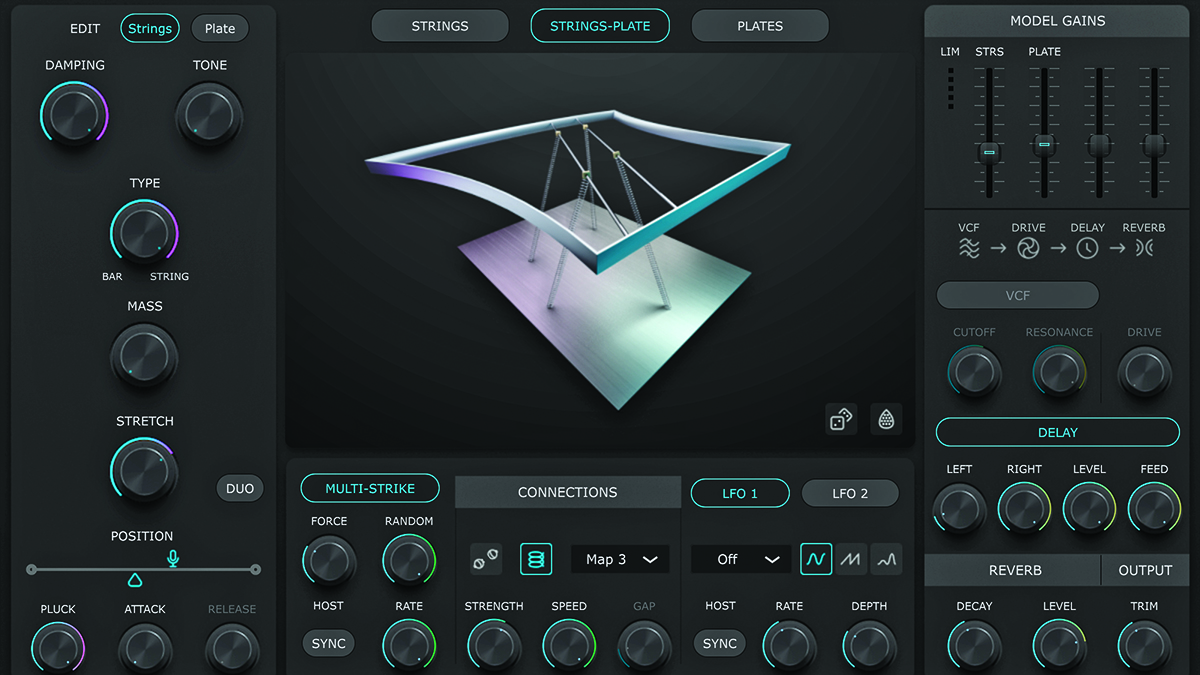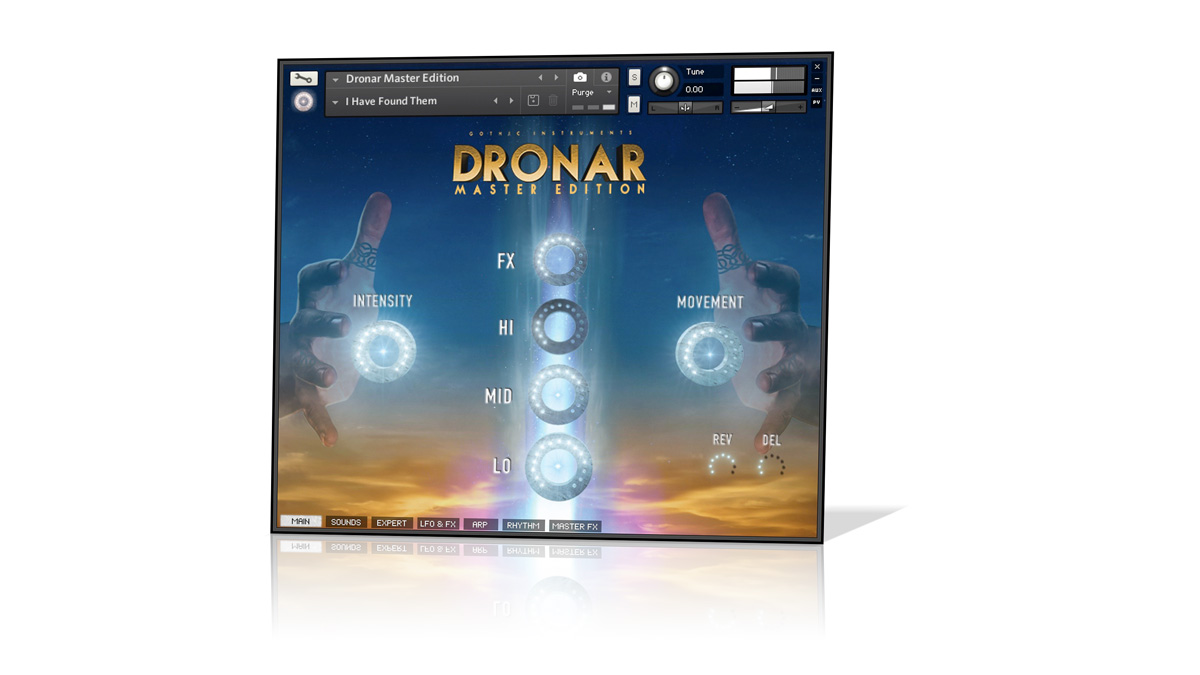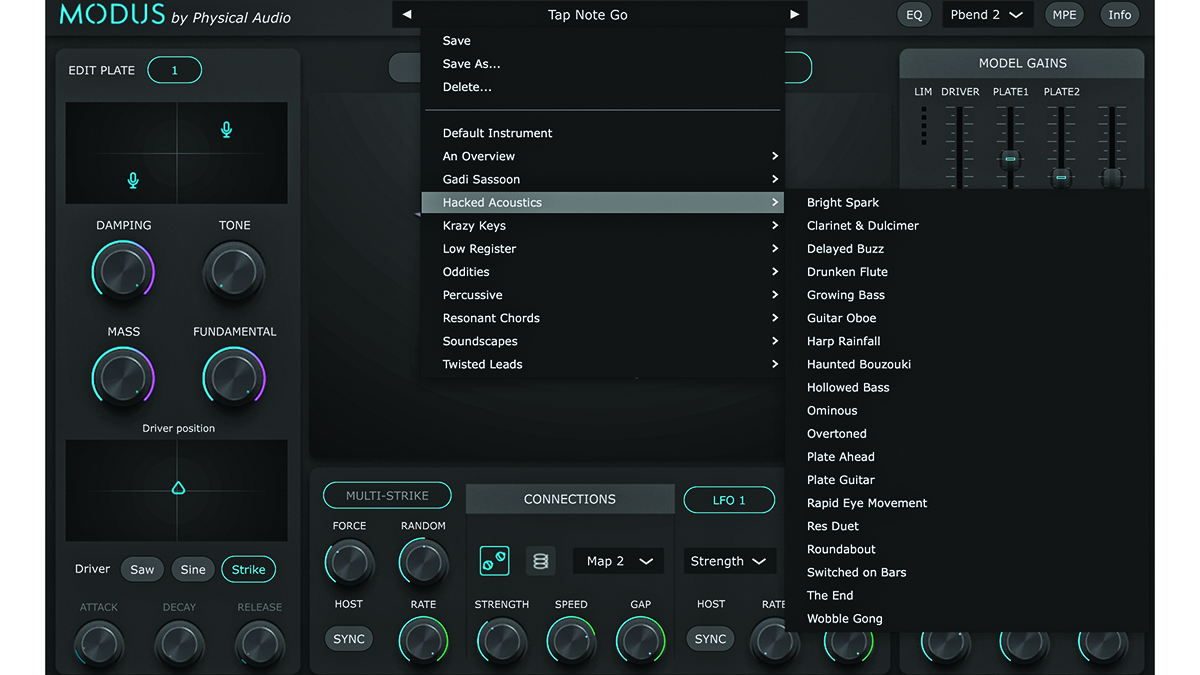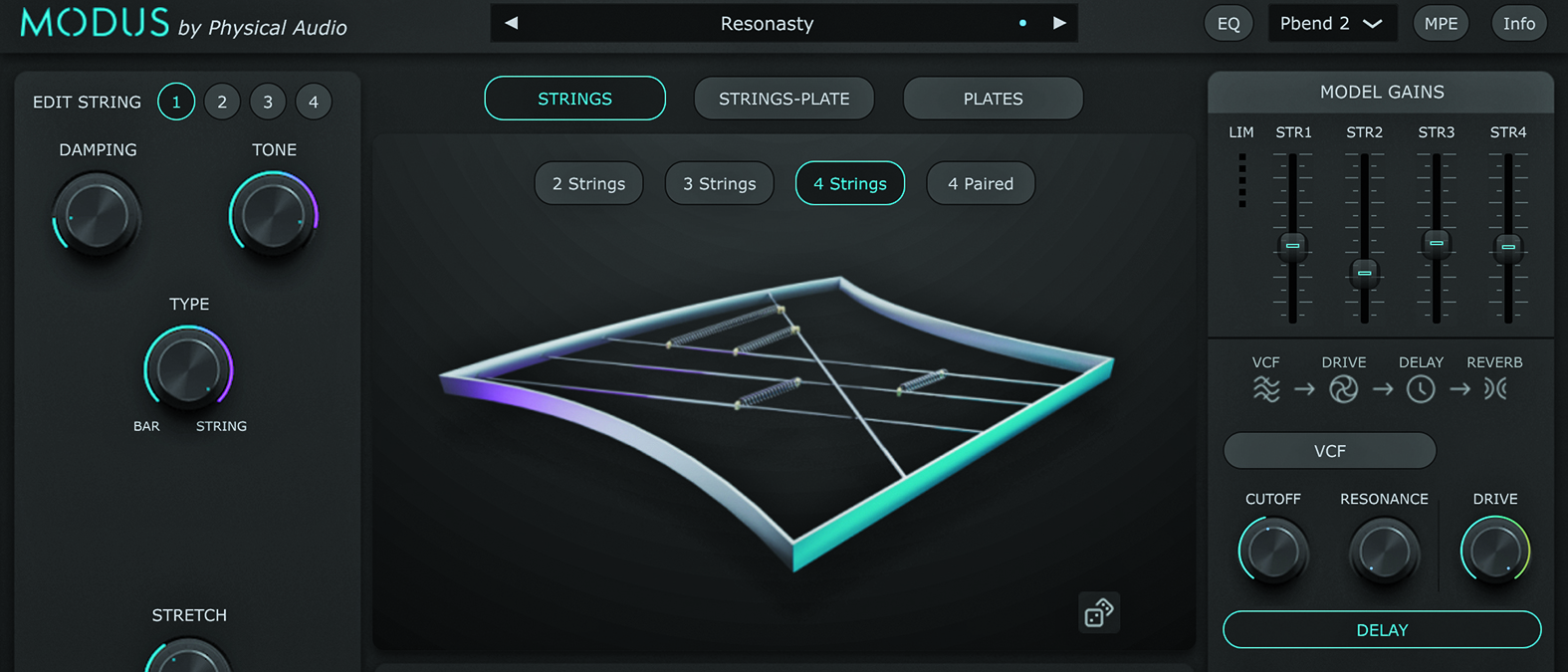MusicRadar Verdict
Modus demonstrates what physical modelling technology should be used for, that is doing something unusual and new. It does it very well indeed.
Pros
- +
Easy(ish) physical modelling.
- +
Fantastically different sound.
- +
Very easy (and quick) to create more.
- +
Quite varied presets.
Cons
- -
Sonic character might not suit (or be varied enough) for everyone.
MusicRadar's got your back
Physical Audio Modus: What is it?
Physical modelling synthesis has had a rather chequered history. It was initially employed by the likes of Yamaha to recreate the sounds of real instruments by modelling their physical properties. As good as the results could be, the recreation of these instruments has been more successfully achieved by sampling the heck out of them; every pluck, scratch, hit and articulation can be recorded and then employed by you to mix into your tunes. No physical modelling necessary.
However, the technology is not redundant and now companies are waking up to the fact that you can use its principals to create entirely new sounds – from instruments that don’t or can’t exist – perhaps something it should always have been used for. And Physical Audio’s Modus not only does this, but it makes physical modelling a relatively easy concept for us all to dabble with, resulting in, at the very least, one of the more innovative sound design plugins we have seen.

Physical Audio Modus: Performance and verdict
Modus’s engine has three main physical models: Plates, Strings-Plate and Plates, and the idea is that the plugin replicates the physical properties of these and how they are connected. You get these engines represented in the top centre of the UI, with tabs to select between them and rather fancy graphics giving you an approximation of how each preset ‘looks’.

• Gothic Instruments Dronar
A different concept in many ways but this series of instruments will give you similarly ‘out there’ results.
• Expressive E Imagine
A modelling synth with wider appeal but one that can still be as esoteric and unusual.
Each of the three main engines has various parameters to tweak in the left-hand column, and we’ll start with Strings. Here you get five notes of polyphony by way of the initial plucked string (or pair) and four connected strings. You then control the damping, tone, type (string or more metallic ‘Bar’) of the (up to) four resonating strings plus their ‘Mass Ratio’ – the level of impact each string makes compared to the original. ‘Stretch’ determines how the string harmonics play across the frequency range while ‘Position’ is a global setting for where the sound is plucked and where it is picked up or heard (with the microphone icon).
Moving to the Plate section and you get similar dedicated parameters but this time related to emulations of one or two metal reverb plates where one plate is struck and the other resonates. Parameters here include the damping, mass and tone of the plate and, as with Strings, where the plate is struck and where it is heard (again with the mic symbol). We’ll skip over Strings-Plate, only because it’s a combination of the above two with a cut down selection of each’s parameters to tweak.
With the bottom section on the UI you choose how the plates and strings are connected with Maps for different setups, and parameters including connection type (Spring or Rattle), strength, distance and speed of effect. There are also options for how notes are played (repeatedly using the Multi-Strike option), and you also get basic modulation by way of two LFOs. A further right-hand panel offers mixing, EQ and effects.
As complex as Modus could be, it’s in the exploration of the surprisingly varied presets (see below) where you learn what each section and dial does. You can really push the boundaries of each model to different sonic areas, very quickly. There’s also a great random feature to quickly shift things away at a tangent and the effects and EQ are a lovely sonic bonus.

The Modus sound
With models focused on plates and strings, there’s an obvious focus on these with the presets. But Modus also demonstrates how wide a sonic spectrum these can produce, either individually or together. ‘String’ can mean anything from tight basses to ethereal long-tailed, zero attack pads for example.
The presets are arranged in reasonable order, with titles like ‘Krazy Keys’ and ‘Oddities’ not really focusing on particular sounds, but that is the nature of the beast. No piano, wind, or synth folders here, because Modus is for soundscapes beyond this and pushing the envelope a bit more. And it makes it very easy to do this as you’ll soon be taking the presets on your own journey.
That said, you do leave your sound design session with a feeling that you’ve just entered a Gothic underworld as Modus does have its own sound. It’s not perhaps as expansive as Physical Audio believes, but it’s a fascinating world to hang around in for a long while.
Never a dull moment
Modus is for those who want to take a more creative and unusual approach in both sound design and music production. If you are in search of more off-road sounds – and easy ways of creating more – then this is a surprisingly fast and cost-effective option.
If you are in search of more off-road sounds then this is a surprisingly fast and cost-effective option
The results might not always be to your taste, but they will be interesting, complex and at least one step away from many other, blander, plugins. And Physical Audio should be applauded for not only that, but offering us all easy access to the often complex world of physical modelling.
MusicRadar verdict: Modus demonstrates what physical modelling technology should be used for, that is doing something unusual and new. It does it very well indeed.
Physical Audio Modus: Hands-on demos
Physical Audio
Dash Glitch
White Noise Studio
DATABROTH
Physical Audio Modus: Specifications
- macOS High Sierra 10.13 to Sonoma 14. Intel or Apple Silicon processor.
- Windows 10 /11. Intel or AMD processor 2011 or newer (Sandy Bridge).
- CONTACT: Physical Audio
Computer Music magazine is the world’s best selling publication dedicated solely to making great music with your Mac or PC computer. Each issue it brings its lucky readers the best in cutting-edge tutorials, need-to-know, expert software reviews and even all the tools you actually need to make great music today, courtesy of our legendary CM Plugin Suite.
“A synthesizer that is both easy to use and fun to play whilst maintaining a decent degree of programming depth and flexibility”: PWM Mantis review
“I feel like that song had everything we needed to come back with”: Bring Me The Horizon’s Lee Malia on Shadow Moses, its riff and the secrets behind its tone, and why it was the right anthem at the right time
“I said, ‘Are we sure we can write a song about death?’”: The story of Mike + The Mechanics' classic No.1 The Living Years











